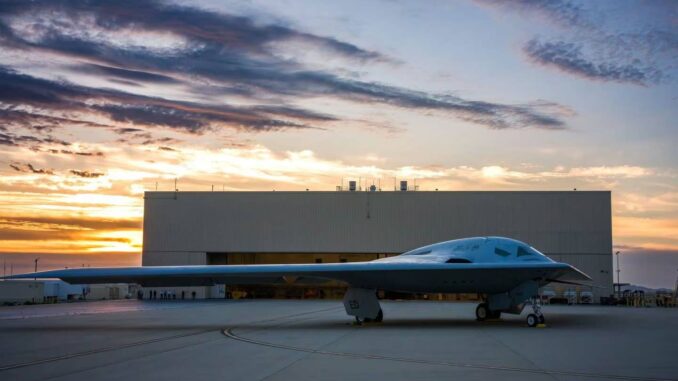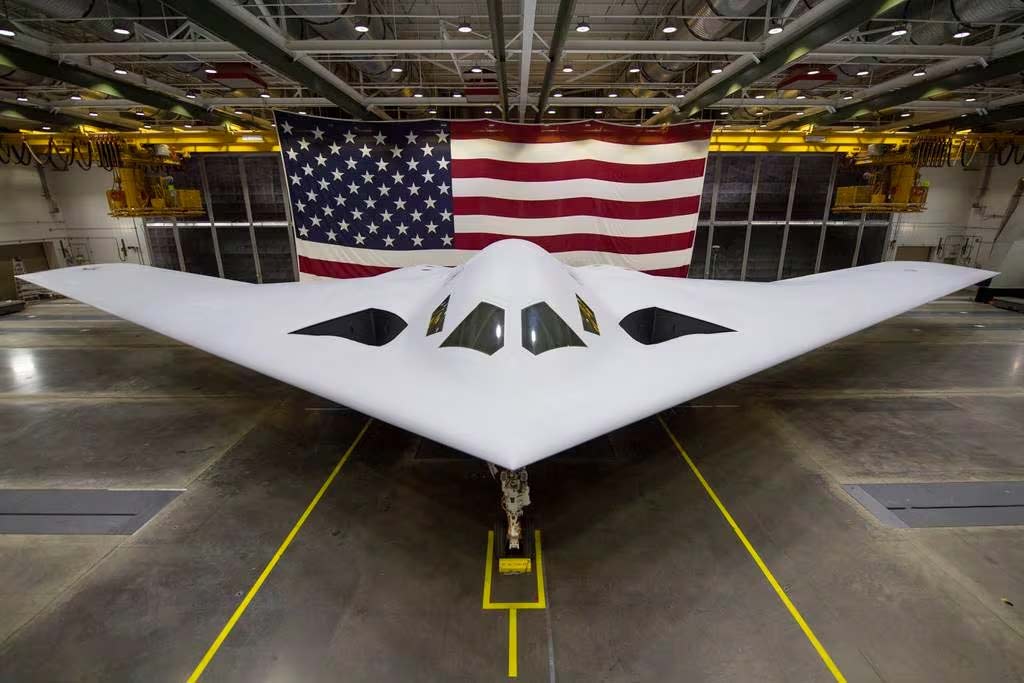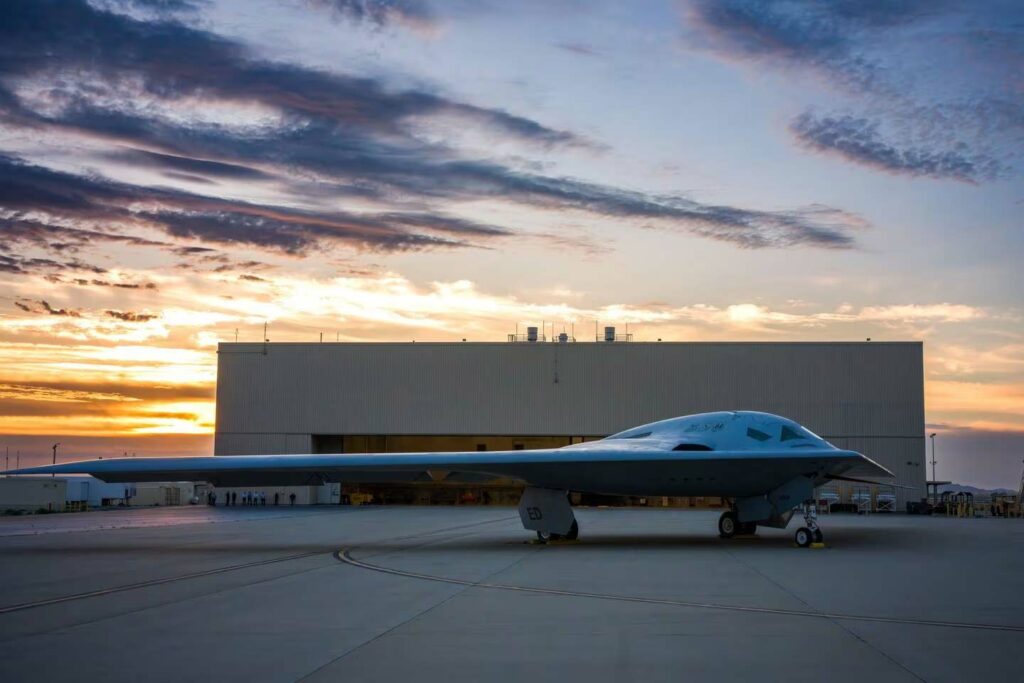
The B-21 Raider, America’s latest nuclear stealth bomber, has completed its maiden test flight, marking a major step forward in the modernization of the U.S. military arsenal. This aircraft, developed by Northrop Grumman in California, represents a significant evolution in stealth technology and offensive capabilities, heralding a new era in nuclear deterrence strategy.

Genesis and characteristics of the B-21 Raider
The B-21 Raider, which made its maiden flight in Palmdale, California, is the result of a long-term project between Northrop Grumman and the US Air Force. This stealth bomber, the first of its type to be developed in the USA in over 30 years, represents a technological leap forward. Its flying-wing design, similar to that of its predecessor, the B-2 Spirit, incorporates advanced materials, innovative propulsion and improved stealth technology, increasing its survivability in future conflicts.
The B-21 Raider: a giant leap forward in stealth technology
The B-21 Raider is available in both manned and unmanned versions, demonstrating remarkable operational flexibility. The B-21’s advanced stealth is a key element in its design, offering an enhanced ability to evade enemy radar. This feature is crucial to guaranteeing the effectiveness of strategic strikes and nuclear deterrence, especially against adversaries equipped with sophisticated air defense systems.
Strategic implications and deterrence
The introduction of the B-21 Raider is part of an overall drive to modernize the US nuclear triad, which also includes silo-launched and submarine-launched ballistic missiles. This development is all the more relevant as the USA seeks to counter China’s rapid military modernization. The B-21 Raider therefore plays a strategic role in preserving American air superiority and nuclear deterrence.
Defence secrecy and the technology race
Virtually every aspect of the B-21 Raider program is classified to protect its advanced technology, particularly against China, which has already replicated American weapons systems such as the F-35 fighter. This confidentiality underlines the strategic importance of the bomber in the global balance of power, and the need to maintain a technological edge.
The consequences of the arrival of the B-21 Raider
The arrival of the B-21 Raider on the international military scene is not without consequences. It could encourage other powers, notably China and Russia, to develop similar technologies, triggering a new arms race. What’s more, the B-21’s ability to carry out stealth nuclear strikes could redefine war doctrines and deterrence strategies, potentially increasing the risk of high-intensity conflicts.

Towards a new era in aerial warfare
The B-21 Raider is more than just an addition to the US military arsenal; it marks the dawn of a new era in aerial warfare. With its advanced stealth capabilities and operational versatility, it is designed to meet future threats and maintain the world’s strategic balance. The planned production of 100 of these aircraft demonstrates the United States’ commitment to remaining at the forefront of military technology.
The first test flight of the B-21 Raider is an important milestone in contemporary military history. It reflects not only the United States’ commitment to modernizing its nuclear arsenal, but also a significant evolution in stealth bomber technology. As geopolitical tensions continue to shape the global balance of power, the B-21 Raider promises to be a key player in the defense of American interests and those of its allies. Its development and deployment raise crucial questions about the future of modern warfare and the technological arms race, redefining the paradigms of international security.
War Wings Daily is an independant magazine.